Bionicle: Mask of Light
5.8 /10 1 Votes
Initial DVD release September 16, 2003 Duration Language English | 5.8/10 IMDb Genre Animation, Action, Adventure Film series BIONICLE Film Series | |||||||||||||||||||||||||||||||||
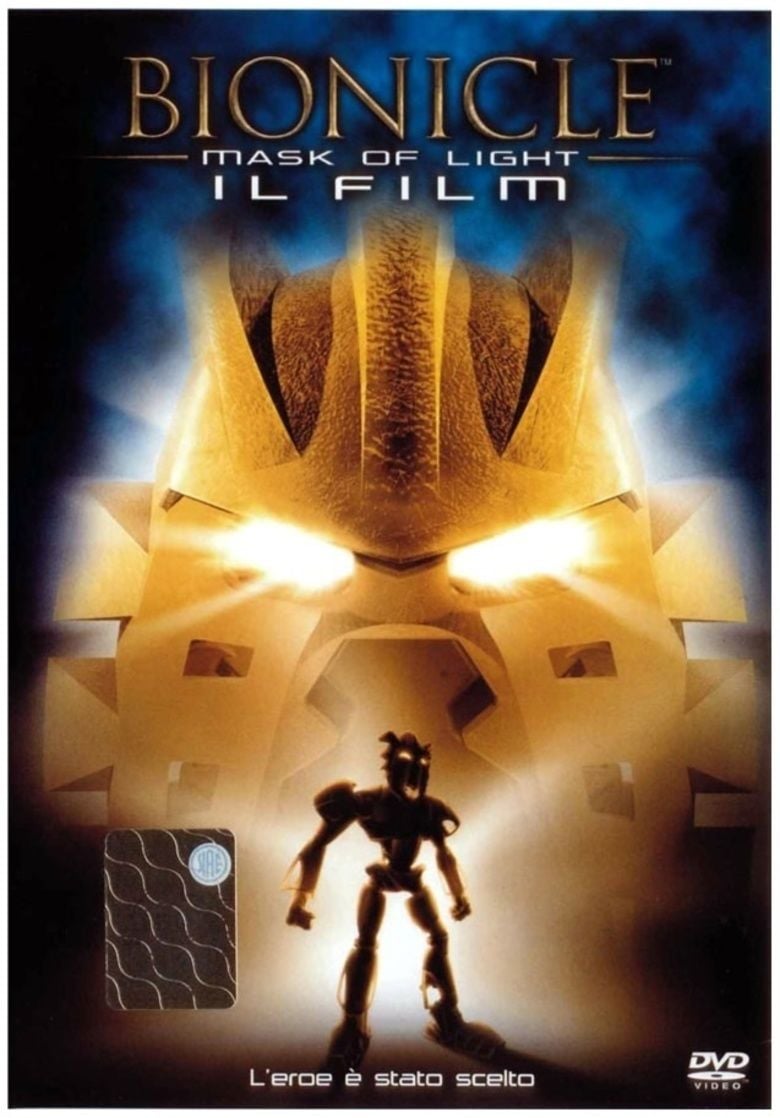 | ||||||||||||||||||||||||||||||||||
Director Terry Shakespeare,David Molina Release date September 16, 2003 Directors Terry Shakespeare, David Molina Cast (Jaller (voice)), (Toa Kopaka / Hewkii (voice)), (Hahlii (voice)), Jason Michas (Takua / Toa Takanuva (voice)), (Toa Tahu / Toa Onua / Grallock The Ash Bear (voice)), (Makuta / Pewku (voice))Similar movies BIONICLE movies | ||||||||||||||||||||||||||||||||||
Bionicle mask of light trailer
Bionicle: Mask of Light, stylized as BIONICLE: Mask of Light — The Movie, is a 2003 direct-to-video science fantasy action film based on the Bionicle toy series created by Lego. Set in a universe filled with bio-mechanical beings allied with classical element-themed tribes, the story follows two friends from the fire-based village of Ta-Koro on a quest to find the owner of the Mask of Light, a mystical artifact that can potentially defeat Makuta, an evil entity threatening the island. The story is based on the latter half of the toyline's 2002–2003 narrative.
Contents
- Bionicle mask of light trailer
- Bionicle mask of light the search for the worst ihe
- Plot
- Characters
- Production
- Design
- Audio
- Soundtrack
- Release
- Critical reception
- Legacy
- References

The project was first proposed in 2001, during the original run of the Bionicle toyline. Lego contacted multiple writers for the project, including original Bionicle contributors Bob Thompson and Alastair Swinnerton, and Hollywood writers Henry Gilroy and Greg Weisman. Production began in 2002, taking approximately a year to complete. A major part of the graphical design was adjusting the characters so they could work in human-like ways while still resembling the original toys. The music was composed by Nathan Furst, who used orchestral and tribal elements to create the score. Voice casting was handled by Kris Zimmerman, and the voicework was done with the setting and mythos of Bionicle in mind.
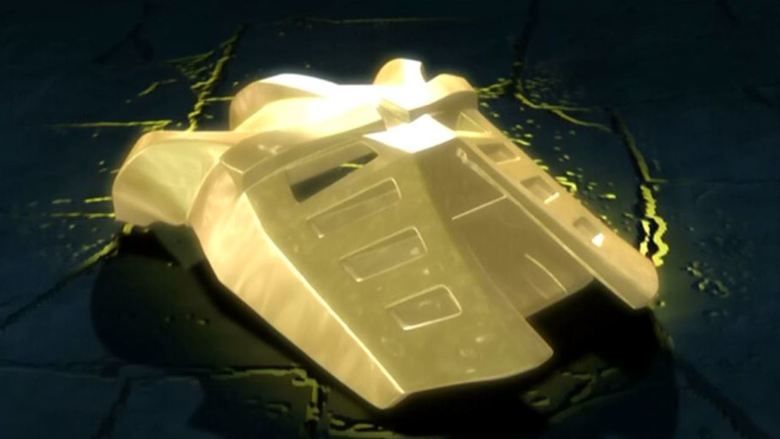
Multiple studios were involved in the development and distribution of Mask of Light: it was co-produced by Lego and Create TV & Film, developed by Creative Capers Entertainment and CGCG, and post-production was handled 310 Studios and Hacienda Post. It was released in September 2003 on home video and DVD, distributed by Miramax Home Entertainment and Buena Vista Home Entertainment. Upon release, the film reached high positions in VHS and DVD charts, and received generally positive reviews from journalists. Following Mask of Light, further films based on Bionicle have been released.
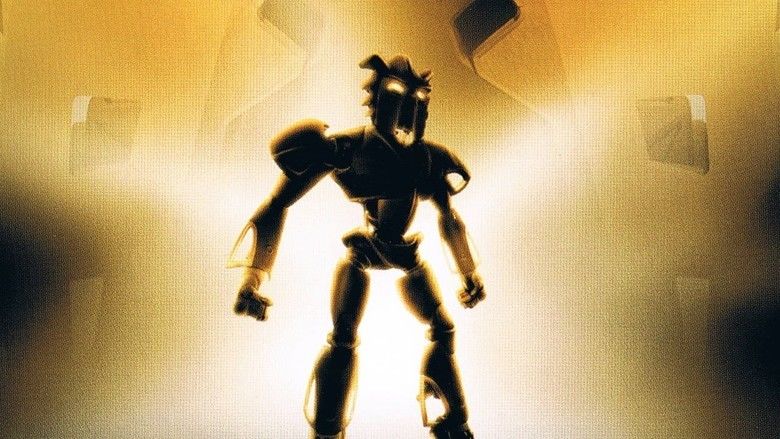
Bionicle mask of light the search for the worst ihe
Plot
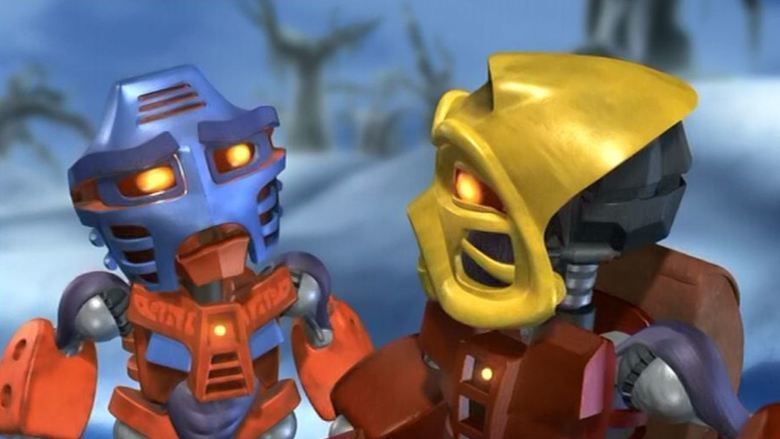
The Mask of Light takes place on a tropical island in the Bionicle universe. According to legend, the Great Spirit Mata Nui created the island's masked Matoran inhabitants. Mata Nui was sent into a coma by his envious spirit brother Makuta, who began a reign of terror on the island until six guardians known as Toa freed the island from his regime. The Matoran, alongside the Toa and Turaga leaders, live in Element-themed regions of the island. The events of The Mask of Light takes place during the latter half of the toyline's 2002–2003 narrative.
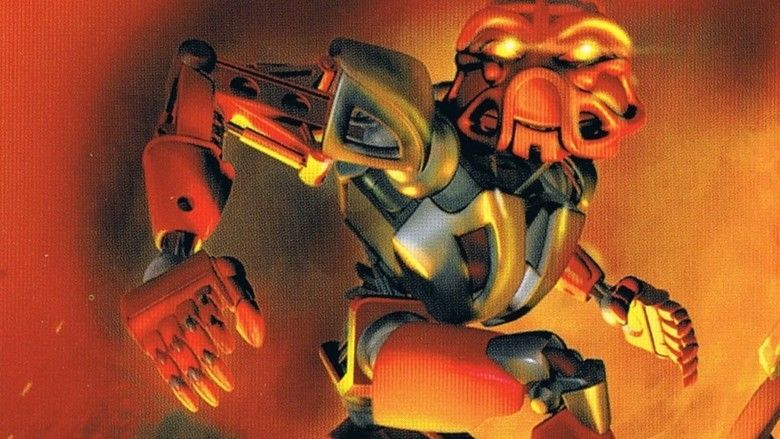
The film starts when two Matoran from the fire village of Ta-Koro called Jaller and Takua discover a Great Kanohi, a Toa mask imbued with Elemental power. The two Matoran then participate in a multi-tribal game of Kohlii, the island's national sport: the match reveals developing tensions between the Fire Toa Tahu and the Water Toa Gali. At the end of the match, the Mask is accidentally revealed and the Turaga recognize its powers. They announce that it heralds the arrival of a seventh Toa destined to defeat Makuta and awaken Mata Nui. Jaller and Takua are sent on a quest to find the Seventh Toa, guided by the Mask. In the meantime, Makuta sends three of his Rahkshi "sons" to retrieve the Mask. During an attack on Ta-Koro which destroys the village, Tahu is poisoned, causing him to become increasingly erratic and worsening his already-strained relationship with Gali.

During their journey together, Jaller and Takua receive aid from the Air Toa Lewa, and the Ice Toa Kopaka, the latter of whom temporarily immobilizes the Rakhshi by trapping them in a frozen lake. After this, Takua is threatened by Makuta, and abandons Jaller in an attempt to shield him. Makuta then releases three more Rakhshi, who attack the Earth village of Onu-Koro as Takua arrives. Tahu, Kopaka, Lewa and Gali arrive to help the Earth Toa Onua and the Stone Toa Pohatu: during the battle, Tahu is further corrupted and goes insane, forcing the Toa to capture him and flee. Takua decides to rejoin Jaller, while Gali and the other Toa purge the Rakhshi poison from Tahu, resulting in his reconciliation with Gali.
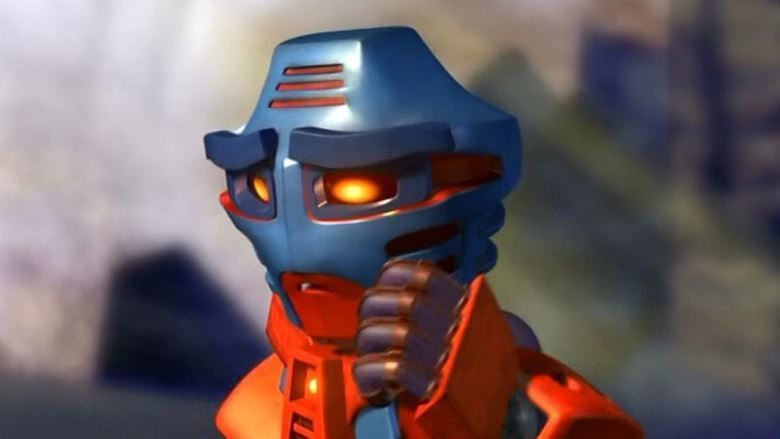
Arriving at Kini Nui, a great temple at the island's centre, Jaller and Takua are confronted by all six Rahkshi. The six Toa mount a united offensive and defeat five of them, but a surviving Rahkshi attacks Takua. Jaller sacrifices himself to protect Takua, and Jaller's final words prompt Takua to don the Mask of Light: the Mask transforms him into Takanuva, the Toa of Light. Defeating the final Rakhshi, he constructs a craft powered by the worm-like creatures inside the Rahkshi to guide him to Makuta. Traveling to his lair beneath Mata Nui, the two hold a Kohlii contest for the island's fate. At Takanuva's bidding, the Toa, Turaga and Matoran gather together in the chamber, and witness Takanuva merging with Makuta to form a single powerful being. With Takanuva's willpower dominant, the being raises a gate leading deeper beneath the island, through which the gathered people flee. The being also revives Jaller before the gate collapses on top of it. The Turaga proceed to awaken Mata Nui using the Mask of Light, which in turn revives Takanuva. The film ends with Takanuva discovering the long-dormant city of Metru Nui, the Matoran's original home.
Characters
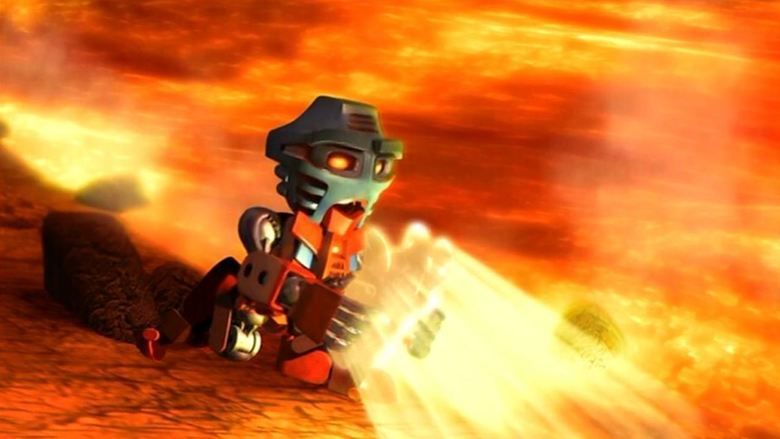
Production
The concept for a movie based on the Bionicle toyline was proposed as early as 2001, when Bionicle became an unexpected commercial success for Lego: this idea was originally inspired by the fact that Lego advertised Bionicle as if it were a movie, and they had received inquiry emails and licensing requests from multiple film studios. Deciding to make the movie while retaining full creative control, Lego began discussing with potential partners, knowing that the film needed to come out while Bionicle was still looming large in the public consciousness. Lego's eventual partner was production entity Create TV & Film. With the initial partnership set up, Lego created some development assets and went round various animation studios to find one that would develop the film. They narrowed it down to two studios, one of which was Creative Capers Entertainment. Creative Capers convinced Lego to employ them after producing a well-received short animated segment featuring Lewa. Creative Caper's three principles, directors Terry Shakespeare and David Molina, and producer Sue Shakespear, all took up their respective roles for the film's production. The deal was reportedly worth $5 million. In a later interview, Shakespeare referred to the film's aesthetic as "primary colors that were coded to the areas", saying it had a "younger feel" when compared to its prequel. He also referred to the film as "very intimate, very organic".
The film began full production in 2002. While most projects of its type took 18–24 months to complete, the development team completed the film in 13 months. The project's budget was later estimated as being between $3.5 to $5 million. In addition to Creative Capers, Taiwanese studio CGCG created most of the animation: at the time, overseas outsourcing was a rarity for CGI movies. By the end of production, the film ran to 77 minutes of raw footage. At this stage, 310 Studios was brought in to handle post production, which mostly entailed cutting the film's length down by 7 minutes. According to 310 Studios president Billy Jones, the hardest part of this was deciding which pieces needed to be cut, as they were impressed with everything that had been produced. 310 Studios also created the opening title and ending credit sequences. Lego also partnered with Miramax to distribute the film, along with developing a future full feature-length theatrical film.
Five different people were involved in the creation of the film's story and script: executive producer Bob Thompson, original Bionicle co-creators and writers Alastair Swinnerton and Martin Riber Andersen, and Hollywood writers Henry Gilroy and Greg Weisman. The script-writing process began in 2002. Gilroy became involved after a meeting with Thompson, and enjoyed working on the script as he greatly admired the Bionicle mythos. Two draft scripts were originally created to see who would write the better script: one by Swinnerton, and one from Gilroy. Due to time constraints, the Gilroy script was accepted with some of Swinnerton's ideas included. Gilroy's most difficult task was creating the dialogue for the Toa: he needed to take into account Thompson's own interpretations, and what the majority of fans thought they should sounds like. In the end, he attempted to stay true to original portrayals while giving the voice actors something unique to work with. He also needed to balance their portrayals and screentime, as each of the six needed a chance to shine. The script went through eight different drafts before the final version, although this was far less than Gilroy was used to seeing on other projects. During planning stages, a lot of time was devoted to how characters interacted with each other: cited examples were Lewa's style of speaking, and Kopaka's stoic behaviour. These traits were accentuated for the film to give the characters more distinction and depth. He also needed to avoid putting in out-of-context pop culture references, which would not fit into the setting of Bionicle. As part of the world and character development, expressions and exclamations unique to the world were created: a cited example is Jaller saying "You could have been Lava-Bones" when Takua narrowly escapes being killed by a flood of lava.
Design
The characters of Bionicle had been portrayed in various ways across multiple media, including the official comics, Flash animations used for online videos, and CGI commercials for the sets. The team decided to use the models from the CGI commercials as their working base for the film models. Before commencing with designing the characters, the team went to Lego's Denmark headquarters and received lessons in the Bionicle design process. The team were originally not going to alter the characters that much, but they needed them to be emotive, which necessitated a redesign. The first step in creating the character models was redrawing the skeleton, then adding muscle pods that would interweave with the skeleton: the muscle gave the characters a more textured appearance, and were added to the shoulders, calves, abdomen and chest cavity. Each character was given a "heart light", a pulsating light in their chest which would fluctuate even when the character was stationary in-shot. They also adjusted the eyes, making the sockets shallower than on the sets and giving them a pupil-like glow. While redesigning the Toa, the team consulted with the original Lego staff to determine what materials the characters were made of: the muscles were compared to rubber, the bones described as a mesh of titanium alloy and carbon fibre, while the armour was made of Kevlar. In general, the outer shells remained mostly unchanged from the sets, although the visible gears were removed and armour was fitted to their backs. The Toa were also bulked up a little when compared to their sets so their feats would be believable for viewers.
Several external features were redesigned for the movie, including the introduction of a movable mouth to allow for a more human character, and a four-pronged mechanical tongue to make them look less like dolls. Other characters used lights behind their masks to form mouth movement. Particular emphasis was placed on the eyebrows and lips of characters. The main change from the original models was the inclusion of hands, which was a necessity if the character performances were to be made realistic. Custom texture maps were created for each character so they would appear unique. In addition to reinventing old characters, the team created original character designs with Lego staff. Makuta, who had only been briefly glimpsed in the comics and web animations, was created through a "Frankenstein principle", taking parts and pieces from multiple Bionicle sets to create the ultimate Bionicle villain. Other original creations included Takua's pet crab Pewku, and a Gukko Bird designed to transport two Matoran. The Rahkshi are described by Bob Thompson as "like hounds hunting down the [Mask of Light]". They were created by Swinnerton, and comic writer Alan Grant helped develop their characters. They were designed to appear more machine-like than the rest of the cast, and their design were strongly inspired by the bio-mechanical artworks of H. R. Giger.
Audio
Voice casting was managed by Kris Zimmerman, who chose voice actors that seemed to suit certain roles: the Matoran were voiced by young adults, while the Turaga were voiced by older actors. The voice actors and their performances were chosen so they would not sound like they came from a specific area of the world, instead sound like they came from and belonged in the Bionicle universe. A notable event during recording was a behind-the-scenes incident between Michas and Francis: originally cast in the respective roles of Jaller and Takua, Michas came into a recording session in a muddled state and began reading Takua's lines by mistake. When Francis came in, he read Jaller's lines: when the staff heard them and were favourably impressed, the actors permanently switched roles. Voice acting for the project was mostly done in 2002, but dialogue was re-recorded during Additional Dialogue Recording (ADR) into 2003: approximately 30% of the final film's dialogue was done during ADR. Audio and music post-production was handled by Hacienda Post. The company's president Tim Borquez served as sound supervisor. Mask of Light was the first time in any media that Bionicle characters spoke.
Soundtrack
The music was composed by Nathan Furst, whose preferred composition style of grand orchestra and electronica was what the film's producers were looking for. Initially ignorant of the Bionicle universe, he explored the official website after getting the job as composer to get better context for his music. This and discussions he had with staff helped in the creation of eight or nine specific themes. The overall style is grand orchestral, but includes elements of electronic and tribal music. Furst used elements of African, Polynesian, and Eastern European music to communicate the fact that Mata Nui was an island, and when he could he incorporated his music into the action rather than leaving it as a standalone element within scenes.
Originally unavailable for purchase as a soundtrack, Furst published the score of Mask of Light as a digital album with Rising Phoenix Records in 2017, fourteen years after the film's release. The album, titled Bionicle: Mask of Light Original Soundtrack [14th Anniversary], was published on March 10, 2017; it contains eighteen tracks with approximately an hour of music. Furst stated that he also plans to release albums for the rest of his work on the Bionicle film series.
Release
Mask of Light was first announced in April 2002 for release in September the following year. It was Lego Media's (later becoming Create TV & Film in early 2003) first project based on original characters and storylines, and their first direct-to-video production. It initially released on 16 September 2003 for home video and DVD. It went on to release in 27 different countries over the next eight weeks. It was released under the Miramax Home Entertainment label through Buena Vista Home Entertainment. Prior to its release, the film received a world premiere at Legoland in Carlsbad, California on 13 September: the premiere featured a huge mosaic built of Lego and a special effects show, in addition to special guests and costumed characters. The following year, the film received its television premiere on Cartoon Network's Toonami program block.
At release, the film ranked high in multiple sales charts. In the "Top Kid Video" compiled by Billboard, it came close to the top of the charts upon release. Upon release, the film ranked at #2 on Amazon.com's VHS best seller list, coming in behind the VHS release of Lord of the Rings: The Two Towers. According to Lego's 2003 financial report, the game was top-selling VHS release in the United States in its first week, and ranked at #4 in a similar list compiled by The Hollywood Reporter. It was also among the top premiere DVDs of the year. The game's rental sales were also high, being placed at #8 in the animated direct-to-video charts and totalling $4.24 million revenue by October 2004. According to Animation Magazine, the film is considered to be a commercial success.
Critical reception
Entertainment Weekly gave the film a favourable ranking of "B+", calling it a "well-constructed CGI adventure" and saying that those who did not understand the story would enjoy the effects and action sequences. DVDTalk's Don Houston was generally positive about both the film and its additional content: he called the visuals "exceptionally crisp and clear" when compared to other films of its type, and gave high praise to the voice acting and noting darker themes within the film. His main criticism was that it relied heavily on foreknowledge of earlier Bionicle storylines. Sci Film.org praised the film's design and visuals, but felt that the film was too short, echoed Houston's criticism of a need for foreknowledge, and said that it was "too politically correct" when compared to other films like Transformers: The Movie. Jules Faber of Digital Views Daily said the story had been designed with children in mind, and again praised the visuals despite seeing some stilted animations and poorly-done environmental effects. He was generally positive about the DVD's audio and visual quality. Both Houston and Faber noted homages to other well-known films, including The Lord of the Rings, Raiders of the Lost Ark, and the works of Ray Harryhausen.
Legacy
Mask of Light won a Golden Reel Award for Best Visual Effects in a DVD Premiere Movie in December 2003. In addition, it won the Best DVD release award at the 2004 Saturn Awards. In 2014, Vulture.com made mention of the movie in a 2014 retrospective on Lego's history in the movie industry. That same year, Radio Times ranked it as among the best movies based on toys, say that the developers "did a better-than-average job of translating the appeal of the toys to screen".
Mask of Light was promoted by Lego with new toys based on the film's characters, a video game based on its story that released in 2003, and a novelisation of the film. Two further Bionicle movies were confirmed prior to the release of Mask of Light, with the second being another direct-to-video feature and a third for theatrical release. The second movie, Bionicle 2: Legends of Metru Nui, released in 2004. The third movie, Bionicle 3: Web of Shadows, was released as a direct-to-DVD feature in 2005. Both films were produced by the same creative team behind Mask of Light. A fourth film by a different studio, Bionicle: The Legend Reborn, was released in 2009 through Universal Pictures Home Entertainment. A four-episode television series based on the rebooted Bionicle toyline is set to begin airing in the first quarter of 2016 on Netflix.
References
Bionicle: Mask of Light WikipediaBionicle: Mask of Light IMDb Bionicle: Mask of Light themoviedb.org
